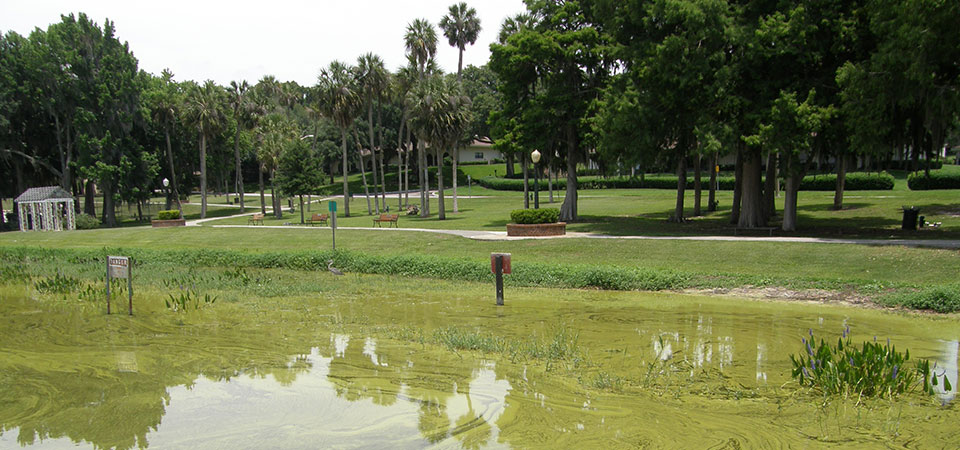Eutrophication
Ocean Shorts: Episode 5

Discolored Water
Lake Dora, Florida, covered in algal blooms. Credit: Florida Fish and Wildlife Commission
Transcript
HOST: Welcome to Ocean Shorts where we revisit and share with you a few minutes from popular Making Waves and Diving Deeper podcasts. Today, I'll revisit our episode on eutrophication with Dr. Suzanne Bricker from the National Centers for Coastal Ocean Science.
Let's listen in.
HOST: First, can you explain to us a little bit more about the difference between eutrophication and nutrient pollution?
SUZANNE BRICKER: Essentially, eutrophication and nutrient pollution are the same thing. Nitrogen and phosphorus are nutrients that plants need to grow. The problem occurs when an excess amount of these nutrients are delivered to a water body and that causes an excessive growth of algae that clouds the water. This may cause other more serious problems such as low levels of dissolved oxygen as the algae decomposes.
HOST: Why is excess algal growth a bad thing?
SUZANNE BRICKER: Well, you may have noticed green masses or mats of algae growing on a pond or a lake. This is the first sign of eutrophication. And that layer of algae acts as a filter where it will block the light that goes through the water that is actually needed for seagrasses to grow. Seagrasses are the plants that are living or rooted at the bottom of the pond or in extreme cases, this filtering or the lack of sunlight from that mass of algae will actually cause them to die.
When algae and seagrass die, they decay. The process of decay uses up oxygen in the water and leads to low levels of dissolved oxygen called hypoxia and anoxia. And this can kill aquatic organisms like fish.
HOST: And besides the green algal masses, are there other changes that we can see because of eutrophication?
SUZANNE BRICKER: Eutrophication can cause a range of changes that we can see, as well as some that we cannot. Sometimes the algae that blooms on account of the increased nutrients will discolor the water, like the green algae that we were just talking about, but in coastal areas the blooms can also appear red or brown in color. In some areas, floating algae will wash up on a beach and really smell as it decays making the beach an undesirable place to go. There's usually a "stinky beach," in almost every estuary. These things may make the water body look murky and smell unhealthy. The changes can also impact the health of organisms and humans. It can decrease fishing success and can cause losses of tourism and real estate values.
HOST: That's all for today's Ocean Shorts. Thanks for joining us! For more information on eutrophication, see our show notes at oceanservice.noaa.gov/podcasts.html. Be sure to join us for our next episode in February.
